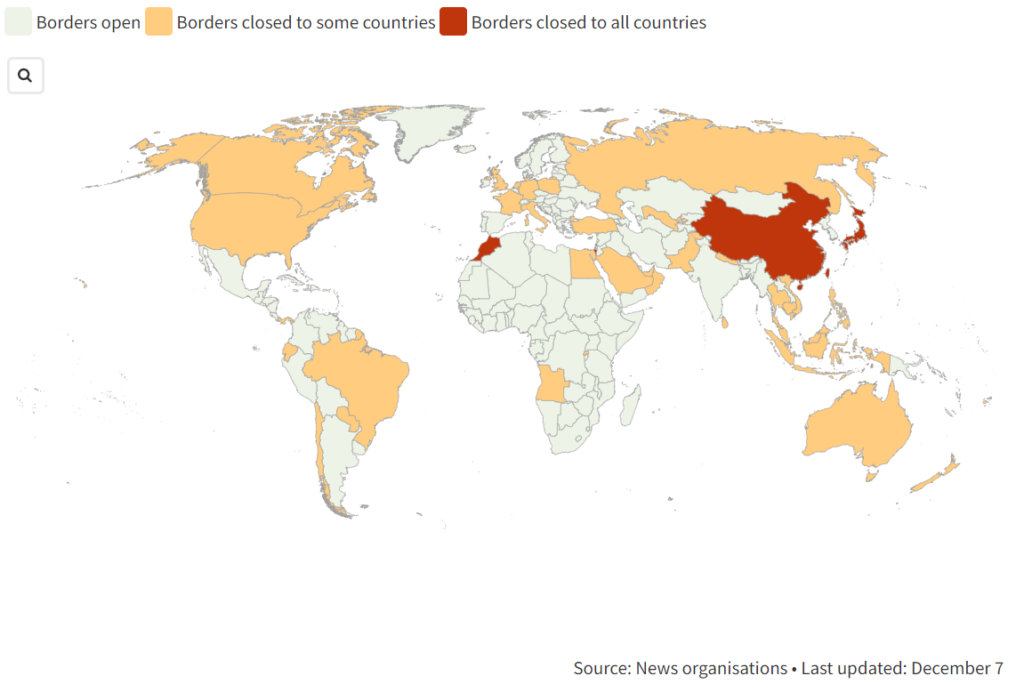While there has been positive news of the aviation industry’s recovery as economies and borders were in the process of reopening, there are two critical imminent issues that pose a risk to its recovery. The first and foremost is the spread of Omicron COVID-19 variant. New travel restrictions prompted by the variant’s rapid spread have set back the recovery in international flights by forcing cancellations and delays in various regions. A flurry of new testing rules, vaccination requirements, and border closings has raised concerns ahead of the important Christmas travel season. More than 30 countries have closed their borders to some nations, and others have imposed even stricter measures to curb the spread of the variant. Nations are adopting differing levels of border control, with countries such as Israel, Morocco and Japan closing their borders entirely, while others have only tightened COVID-19 testing at the border. The following map is current as of December 7, and the status is changing quite fast as the Omicron spread continues (Aljazeera).

China, Israel, Japan, and Morocco have implemented total bans on international travel, for different lengths of time and with different exceptions. For the most part, however, non-residents are not permitted to enter these countries. Dozens of countries recently announced partial bans on international travel, many of which focus on restricting travel from high-risk countries such as Botswana, Eswatini, Lesotho, Malawi, Mozambique, Namibia, Seychelles, South Africa, and Zimbabwe. Major economic generator countries have implemented this type of restriction, including the United States, Canada, Australia, and Russia. The second critical issue impacting aviation recovery is the inflation rate. In Canada and the United States, the inflation rate is rising at record levels. The effects of inflation have destroyed national economies and influenced government elections. It was even declared Public Enemy #1 in the US in 1974. But what exactly is inflation? “Inflation is the rate of increase in prices over a given period of time. Inflation is typically a broad measure, such as the overall increase in prices or the increase in the cost of living in a country. But it can also be more narrowly calculated—for certain goods, such as food, or for services, such as a haircut, for example. Whatever the context, inflation represents how much more expensive the relevant set of goods and/or services has become over a certain period, most commonly a year” (International Monetary Fund). According to the Organization for Economic Co-operation and Development (OECD), consumer price index in the U.S to increase by an average of 4.4% in 2022, up from 3.1% when it last released forecasts in September and inflation in the Eurozone is expected to be 2.7%, up from 1.9% (Wall Street Journal). The new forecasts were made before the discovery of the Omicron variant; with the new variant, the projected inflation rate may further increase. The reason inflation impacts aviation is that if the price of everyday food, services, and consumables increase with no increase in salaries, people will have less money left to spend on non-essentials, such as leisure travel, because the priority will be to pay bills and put food on the table. As we move into the new year, we will have to keep a very close eye on these two critical issues as these can significantly impact the aviation industry’s recovery from the pandemic.
